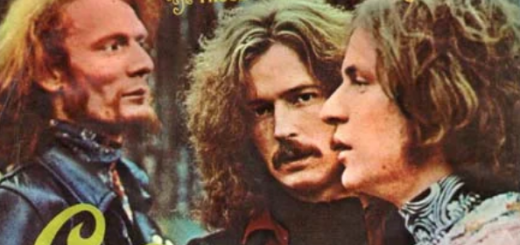World of Pain by Cream Lyrics Meaning – Exploring the Depths of Urban Melancholy and Existential Reflection
Lyrics
Outside my window is a tree.
There only for me.
And it stands in the gray of the city,
No time for pity for the tree or me.
There is a world of pain
In the falling rain
Around me.
Is there a reason for today?
Is there a reason for today?
Do you remember?
I can hear all the cries of the city,
No time for pity for a growing tree.
There is a world of pain
In the falling rain
Around me.
Outside my window is a tree.
Outside my window is a tree.
There only for me.
And it stands in the gray of the city,
No time for pity for the tree or me.
There is a world of pain
In the falling rain
Around me.
Cream’s ‘World of Pain,’ a track from their 1967 album Disraeli Gears, is an auditory journey into the somber realms lying at the intersection of personal solace and urban despair. This seemingly simple ballad, laden with poetic symbolism, invites listeners into a reflective space that transcends the era of its making, resonating with universal themes of isolation and the search for meaning in a world often indifferent to individual suffering.
Amidst Eric Clapton’s soul-stirring guitar tones, Jack Bruce’s haunting vocals, and Ginger Baker’s meticulous percussion, unfolds a narrative that is at once intimate and expansive, confined by the windowpanes of the individual experience yet casting its gaze upon the collective human condition. ‘World of Pain’ may be a scan of the urban skyline, but its horizons are boundless, its relevance undiminished.
The Urban Tree: A Silent Witness to Solitude
The repetitive invocation of ‘Outside my window is a tree’ strikes a chord of solitude, acting as a beacon of constancy in a swiftly changing metropolis. This tree represents more than mere flora amidst concrete; it stands as a confidante to the individual’s inner tumult, an organic juxtaposition to the city’s grayscale. For the narrator and the tree itself, the city offers no respite, no bending in its relentless forward march.
The tree’s isolation mirrors that of the narrator—a kindred spirit grounded yet reaching skyward, striving for light amongst the shadows of urban canyons. It is a symbol potent in its simplicity, a marker of life where the pulse of the city seems indifferent to the survival of the individual, be it man or nature.
Raindrops and Reverberations: Soundscapes of Sorrow
Through the imagery of ‘falling rain,’ Cream encapsulates the pervasive sense of melancholy that can drown a city’s soul. The rain is relentless, just like the ‘world of pain’ that floods the narrator’s consciousness. The sound of precipitation is not merely atmospheric; it is a rhythmic reminder of the incessant hardships that life in this urban environment entails.
This acoustic depiction of rainfall becomes a metaphor for tears, the undifferentiated cries of a city’s denizens, perhaps unobservable to the uncaring onlooker, but ever-present like a mist that seeps into every crack and crevice of the human heart
Asking the Timeless Question: The Search for Reason
The query ‘Is there a reason for today?’ echoes through the song like a whisper challenging the cacophony of city life. It is a question of existence, a plea for significance in a world that might seem to negate it with its every strident honk and bustling stride. It encapsulates the existential crisis embedded within the modern psyche—what is the role of the individual in this vast urban theater?
The remembrance, ‘Do you remember?’ serves as a call to the collective memory. It is an invocation to recall a time before the city, before the gray, before the existential burden took root. Through this, the songwriters potentially nudge listeners to recall their intrinsic connectedness to each other and to a life beyond the fabricated confines of concrete and steel.
Piercing the Veil: The Song’s Hidden Roots in Modern Alienation
Beneath the surface narrative of ‘World of Pain’ lies a deeper critique of the modern experience. It’s a reflection of the alienation and anonymity that pervade cityscapes, where people become silhouettes marching to an unyielding rhythm of survival. The tree outside the window becomes a silent rebel, a monument to what exists beyond the antiseptic veil of urbanity.
In this respect, the tune is a spiritual sibling to the works of poets and philosophers who have long grappled with the theme of alienation in modernity. From T.S. Eliot’s ‘The Love Song of J. Alfred Prufrock’ to the existential musings of Jean-Paul Sartre, ‘World of Pain’ embodies a musical continuation of this dialogue, provoking thought through evocative lyricism.
Echoing Throughout Time: Memorable Lines That Resonate
While the entire composition is suffused with poignant lyrical craftsmanship, certain lines etch themselves into the listener’s psyche, such as ‘And it stands in the gray of the city, No time for pity for the tree or me.’ This pair of lines distills the essence of the song—it’s not just a lack of pity, but a lack of time, the inexorable push of the urban clock that sanctifies no pause for reflection or compassion.
Another haunting echo is heard in the simplicity of ‘Around me.’ It is a quiet but powerful admission of the pervasiveness of pain, a reminder that, while the experience may be a solitary one, its scope is universal. The encapsulating refrain ‘Around me’ ripples outward, a testament to the shared human experience—even within the isolating walls of city living.








